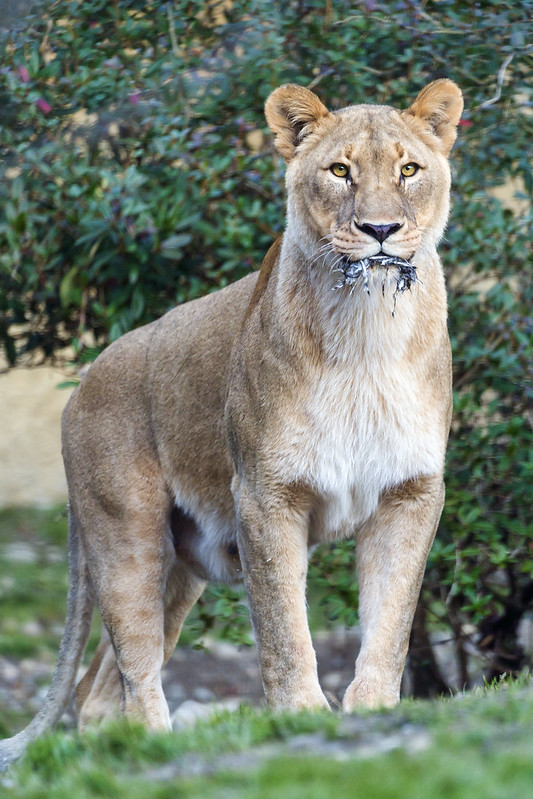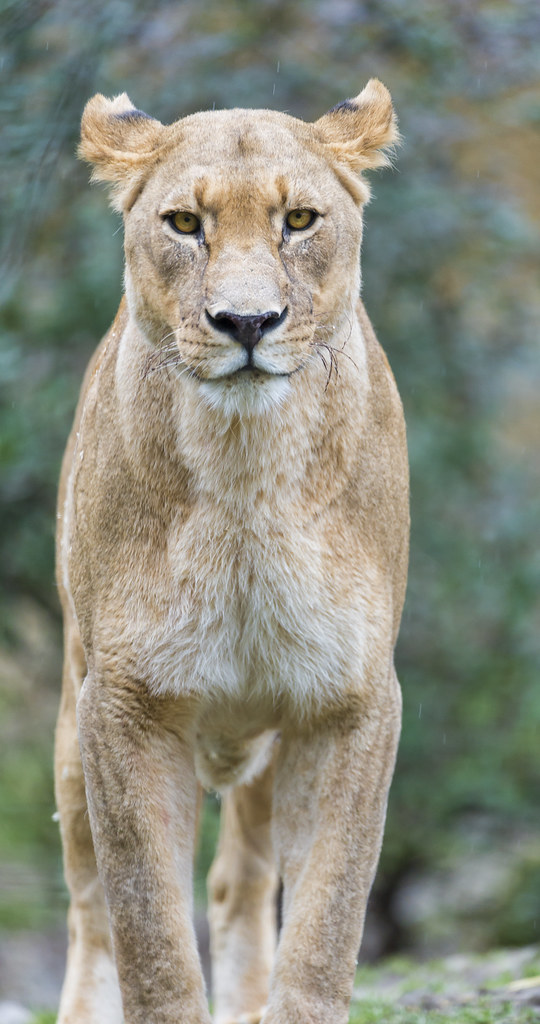Michael Hardin
April 22, 2014
Sure, everyone knows just how popular, amusing, and tugging a
good cat video is, and in 2008, a
YouTube video
reunion of two men and their former pet lion, Christian, went viral.
Lauded by many as a success story for private ownership of lions, the
actual story behind the relationship is more of a cautionary tale about
the problems of owning a big cat.
“
A Lion Called Christian”
tells the story of how Anthony Bourke and John Rendall had gotten in
over their heads and were able to find a way to reintroduce their pet
lion into the wild. It would be great if this is how these things worked
out, but in reality, it is usually quite the opposite. More often than
not, people who try to keep big cats as pets
end up abandoning them, killing them (intentionally or unintentionally), or even being killed by them.
Don’t be deceived by a tiger’s or lion’s good looks. These
big cats
(and others) may be beautiful and seem cuddly at first but they are NOT
pets. Let’s take a look at the five simple reasons below that prove why
big cats should
never, ever be kept as pets.
1. Big Cats are Big $$$

Ok, so you want a big cuddly lion or tiger? I get it, they are
beautiful and would really impress your friends and neighbors. And,
besides, even Lorde said if you want to be a “
royal,” you need to have a
tiger on a gold leash.
But imagine these big cats as the Mercedes Benz of animals. If you can
overcome the sticker price ($900-$25,000), think about the maintenance
costs. A lion can eat as much as 10 to 15 pounds of meat a day and so if
you only (under) fed the lion 8 pounds of meat a day, it would be
nearly $30 a day (at $3.50/lb) or $210 a week to feed that lion at
minimum amount. That’s certainly a hefty chunk of your hard-earned money
flying out the door just to keep an animal in your home who is not
meant to be a pet in the first place. Ouch.
2. The Exotic Pet Trade Breaks Up Big Cat Families

Since trading exotic pets is
regulated and/or illegal in many states and
countries, there is a large black market for exotic animals. Right up there with illegal drugs and illegal firearms, the
exotic pet black market
is a huge industry estimated at as much as $15 billion a year. The
animals are hunted, taken away from their families and natural habitats,
and then treated as property. It is incredibly inhumane and unfair to
animals and dangerous for the people doing it. They are often not
transported properly, cared for properly, and sold off to the highest
bidder regardless of that person’s ability to properly care for them.
Right now, there are more captive tigers than wild tigers and somehow
that just doesn’t seem right. By owning exotic wild animals, you may be
helping to destroy the very animal you claim to love. The best way to
combat the black market is to not support it. If there is no one buying
illegal exotic animals then there would be no one selling them. Don’t be
the bad guy — be a hero instead and stand up for
real big cat conservation.
3. Big Cats are Dangerous, Natural-Born Hunters

Big cats are wild animals at heart. It is in their nature to travel,
stalk, and hunt down their prey. Let’s face it, these animals can get
downright “hangry.” Lions are the
apex predators
for a reason — they are skilled, ruthless, and violent hunters. When
captivity takes this opportunity away, these cats can get frustrated.
I visited one sanctuary where they did not allow children under six
years of age in because the cats would stalk them and get too excited,
seeing them as potential prey. Evidently, large predators salivating to
eat children is a bad thing — who’d a thought? At another sanctuary, I
visited with my young children, the cheetah was pacing back and forth
clearly stalking them. The kids thought it was a funny game, but it was
clear that the cheetah wanted to eat them. Given the choice, I would
rather find a wolf in grandmother’s house than a lion any day, although
neither choice is anywhere near ideal.
4. A Cuddly Big Cat is Just an Illusion

Big cat cubs are adorable, cute, and cuddly and usually not very
dangerous. However, these cats grow up quickly and they grow to be very
big. Imagine your cute little kitty cat, add about 500 lbs., and big
sharp teeth and claws — THAT’S a big cat. Even big cats that may love
their owners play big. There
have been numerous accounts
of big cat attacks and many of these appear to be “playtime” with an
unsuspecting person, even their loving caretakers. Big cats in nature
play rough, as this is part of their training for hunting. Also, big
cats are just
plain big and while they may not intentionally be
trying to maul, kill, or hurt anyone, sometimes they just don’t know
their own strength and so we shouldn’t take a chance with them in the
first place.
5. Captivity Can Drive Big Cats Crazy

So you’ve heard all the warnings and are still convinced you need a
big cat in your house. Maybe your new cub is cute and cuddly and rolls
around and plays, and MAYBE that cub will grow into a large predator
that might really, really love you. But, most likely, that same cat will
slowly go crazy.
Captivity of big cats causes them great stress which can potentially lead to psychosis, also known as
zoochosis.
Do you really want to share your space with a large, potentially
unstable natural born killer? This psychosis (or zoochosis) is often
exhibited through pacing and acts of aggression (even on trusted
caretakers). Many big cat
attacks
that occur from aggression are born out of this frustration. Because of
their large size, their natural ability to easily overpower a human,
and their potential for aggression, big cats are often kept caged at all
times, therefore their natural instinct to hunt and move is not
allowed. So by having a big cat as a pet, you’re not only living with a
very, very large natural-born hunter but also one that may literally go
crazy on you. Yeah, that’s a good idea, said no one ever.
Lead image source: Dave Stokes / Flickr
source
 Lion cubs at play
Lion cubs at play Lion Cub in a tree
Lion Cub in a tree Lion cubs at play
Lion cubs at play
 All kitties need a scratching post
All kitties need a scratching post